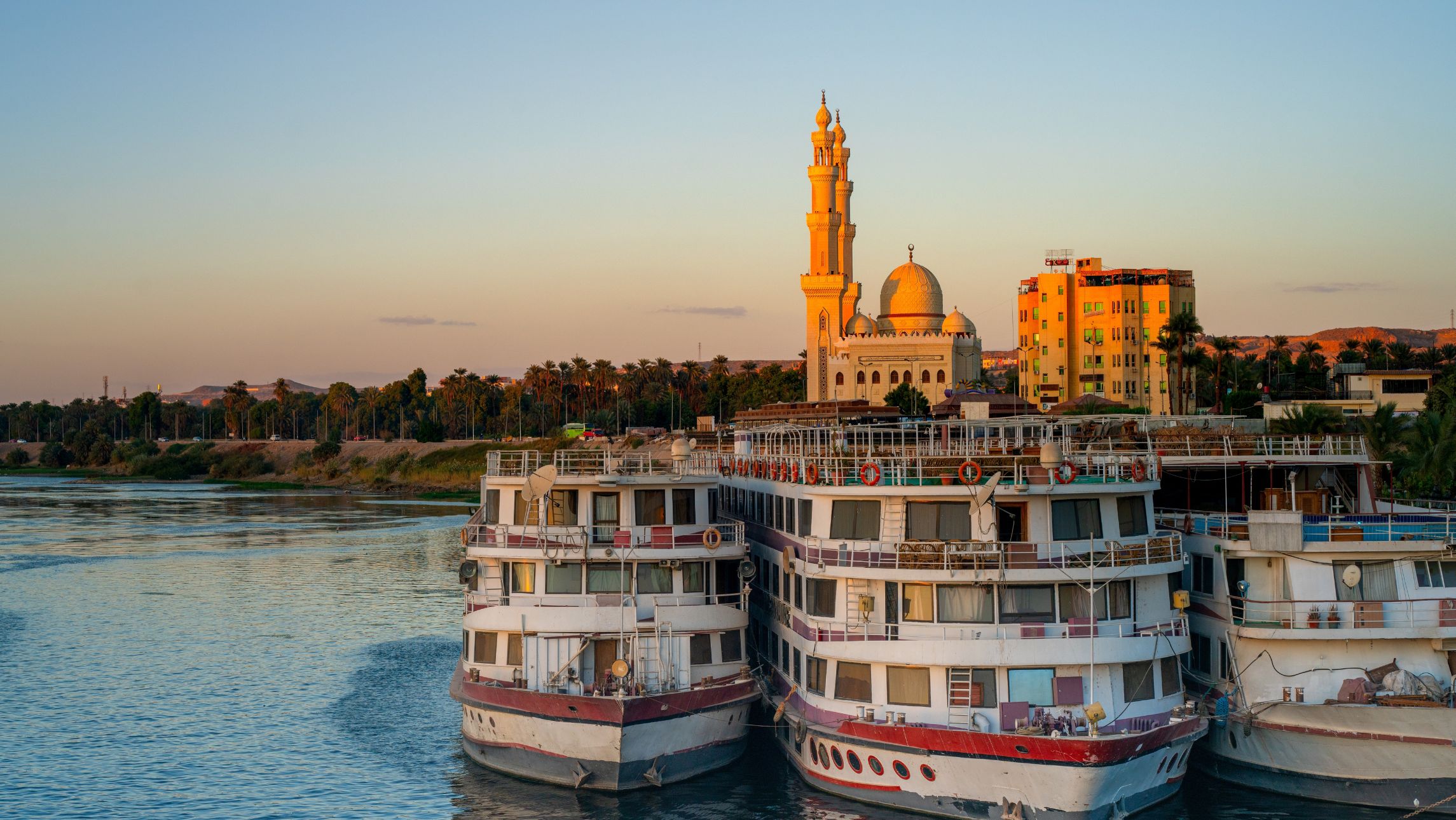A river cruise through north-east India’s Assam, rich in wildlife and dotted with traditional villages, offers a peaceful perspective on this teeming subcontinent. Words: Sally Macmillan.
Drinking a cup of the robust Assam tea I brought back from its source a couple of months ago brings to mind vivid images of women in bright saris picking tea in picturesque plantations. While the scene offers a myriad of photo opportunities, the women’s work is back-breaking and poorly paid – but somehow, they still found time to enjoy a laugh with our group of visiting westerners.
The tea plantation in question was in Hathi Kal, in Assam, not far from Kaziranga National Park on the bank of the broad, winding Brahmaputra River. But our cruise along this mighty waterway had begun further south, in Guwahati, a bustling river city dominated by the Kamakhya Temple on top of Nilachal Hill.
Stalls approaching the temple sell strings of marigolds, images of Hindu gods, bells and temple offerings; the narrow alleyways are thronged with people coming and going from the temple compound. Two water buffalo are tethered near the entrance, awaiting their sacrifice the next day, and a few goats’ heads litter the temple floor. We have been warned – it’s not for the squeamish!
Afterwards, we visit Guwahati’s Commonwealth War Graves cemetery, a quiet green sanctuary where we meet the people who’ll be fellow passengers on RV Charaidew: a group of English men and women who prove to be excellent travelling companions with a wealth of knowledge about India and WWII history.
We are taken to our vessel by a gaily-coloured ‘country boat’ and welcomed on board with cool drinks, served by the charming Assamese crew. RV Charaidew is one of a brace of river ships run by the Assam Bengal Navigation Company. While it was built in 1973, and rebuilt in 2003, the vessel harks back to bygone colonial days, with wood-panelled interiors, rattan furniture and a wonderfully old-fashioned wheelhouse. Accommodation on board consists of 12 cabins (thankfully, air-conditioned, though this was erratic at times), a bar and saloon on the upper deck, a dining room on the lower deck and a large shaded sundeck on the top.
The Brahmaputra flows 2,900 kilometres from its source in the Himalayas to join the Ganges and then empties into the Bay of Bengal. In some places, the river is 30 kilometres wide, but post-monsoon, water levels can drop dramatically – as we discover when Charaidew gets stuck on a sandbank on our first evening. It takes two tug boats working through the night to dislodge the ship: later, we find out that we have made the front page of Kolkata’s huge daily paper, The Telegraph.
By the time dawn breaks, we’re heading upstream again at a stately five kilometres per hour. The serene waters are occasionally punctuated by passing river traffic; wooden boats, packed with people carrying umbrellas to shade them from the fierce sun, perched atop their cargo of logs, nets and crates of fruit. It’s hard to believe that this peaceful, scenic waterway is part of the same country as the noisy, densely populated capital cities – but India is vast and full of surprises.
Our first stop is at Kajoli, a small village some 30 kilometres north of Guwahati. The villagers, who make a living by weaving and fishing, escort us along pathways and invite us into their houses. Having Bengali-speaking guides with us is invaluable when we’re meeting local people.
At Kajoli, His Excellency the British Ambassador to India, his wife and one of their sons join the cruise – the Aussies on board are by now thoroughly outnumbered by the Poms.
With no TVs and no mobile phones, life on the ship is deliciously leisurely. Lunch, served promptly at 12.30pm, is an interesting fusion of western and Assamese dishes; dinners are a touch spicier. Every evening, we gather in the saloon at 19:00 hours for a briefing over refreshing gin and tonics – consumed so enthusiastically that after a couple of days, the tonic runs out. The sunsets are magnificent and one evening, we spot a rare Gangetic dolphin.
As we progress upriver, undulating plains give way to thickly wooded cliffs. We stop at a remote outpost, a ‘maiden port’ for Charaidew, and are greeted by crowds of friendly locals and fascinated children. There’s a sense of timelessness here that comes from the presence of lifestyles and rituals that have been followed for thousands of years. The villagers cultivate jute, rice and lentils, drive water buffalo and catch fish. They seem as curious about us as we are about them.
We pack our bags and take the ‘country boat’ to Orang National Park, on the northern bank of the Brahmaputra. This is a small park of just under 79 square kilometres, in which you may see one-horned rhino (tick), barking deer (tick), wild elephant (tick), tiger (very rare) and many varieties of migratory and water birds – especially if you’ve brought along binoculars.
A sign at the park’s entrance includes the instruction “no teasing of wild lives”, which we find very amusing. Then there is the incident of His Excellency’s jeep going missing in the bush, which causes major consternation for the security detail – never a dull moment.
At Orang, we say farewell to our English cruising companions, who are returning to the Charaidew, while we board a minibus for the drive to Diphlu River Lodge, on the boundary of Kaziranga National Park.
It is a small-scale ‘resort’ of 12 individual lodges on stilts, built in 2008 and beautifully designed with soaring roofs, shady verandahs and large, cool bathrooms. The lodges are connected by a swaying bamboo walkway that also leads to the machan (dining room) and a spacious, shaded bar/lounge area, from which you can view an amazing variety of birds.
On our first afternoon at the Lodge we take a short minibus trip to Kaziranga. It is the oldest national park in Assam, encompassing an area of 430 square kilometres, and is renowned for its wildlife viewing. We arrive in time to see working elephants being bathed in the river, and as the mahout scrubs his charge with a bunch of turmeric leaves, two mother elephants arrive on the scene with their offspring. One of the many highlights of the trip is patting one of these babies – while keeping a wary eye on his mother. The little elephant has a scar on his back, allegedly the result of a tussle with a tiger – so though they’re rarely seen, the evidence points to the continued existence of big cats in the park.
As the sun sets over the grassy plain, we’re treated to another rhinoceros sighting: this rhino, however, is much closer and in clearer view than the one we saw at Orang. It’s a thrilling experience.
The next morning, we take an elephant ride through the bush to another area within the park. Later, we stop at a nearby village, Bocha Gaon, where women weave exquisite saris from Assamese muga and eri silks. Our guide, Dhiren Duarah, invites us into the house he’s built himself and plies us with the fresh juice of coconuts from the tree in his garden.
An hour’s flight from Guwahati takes us back to the craziness of Kolkata, where we stay at the conveniently central Kenilworth Hotel. After a spot of intense shopping, we repair to the Oberoi Grand for drinks and a beautifully presented dinner.
On a whistle-stop tour of the city the next day, we cover a lot of ground – but Kolkata, originally the capital of India, is so rich in history that you’d need at least a week to explore it thoroughly. We start at St John’s, the first Anglican church in India, and see some of the city’s key heritage sites, including Fort William, the Mahakaran (Writers’ Building), the Shobhabazar Rajbari or King’s Palace – still privately owned by the family who built it in 1757 – and the Old City. The flower market on the bank of the Hoogli is a blast to the senses: the vibrant colours of flower garlands contrasting with the overpowering stench of decay.
A reviving coffee at Kolkata’s famous Indian Coffee House in College Street is essential, as is a stroll down nearby Chatterjee Street to browse its hundreds of bookshops. If you have time, a heritage tram tour of Kolkata is also recommended – but you’ll need to book it a month in advance.
Sally Macmillan was a guest of Active Travel (www.activetravel.com.au or call 02 6249 6122) and the India Tourism Office, Sydney (02 9221 9555).
FACT FILE
Cruise line: Assam Bengal Navigation Company
Vessels: RV Charaidew and RV Sukapha
Max passenger capacity: 24
Facilities: 12 air-conditioned cabins, saloon, bar, dining room, sundeck with bar and small souvenir shop.
Best time to travel in Assam: October to March
Highs:
Returning to India after a 30-year gap.
Lows:
Random cancellation of a domestic flight from Kolkata.
Want to know more?
The Assam Bengal Navigation Co. specialises in cruising India’s great waterways, and offers a selection of cruises along the Brahmaputra, Ganges and Hooghly rivers.








